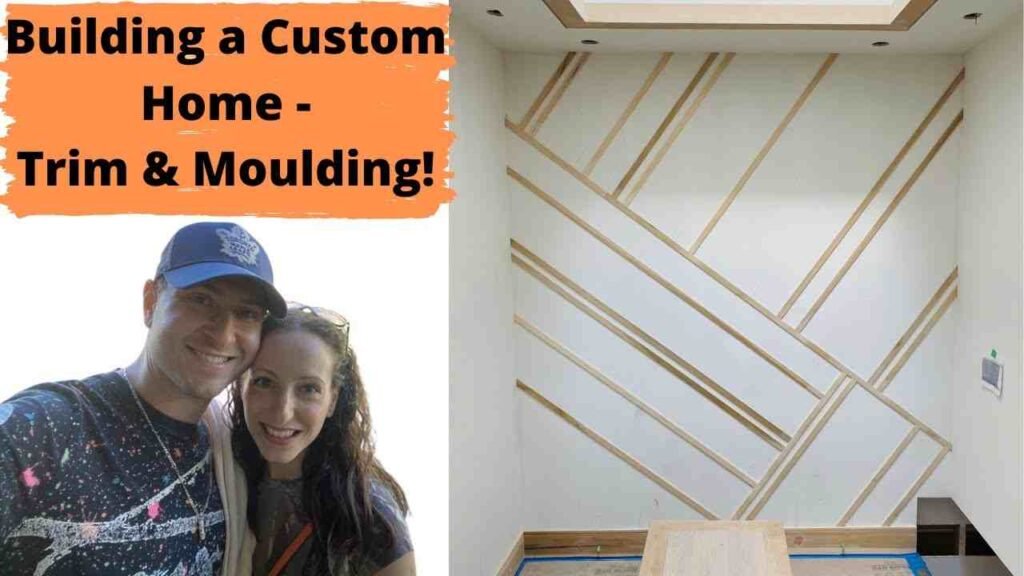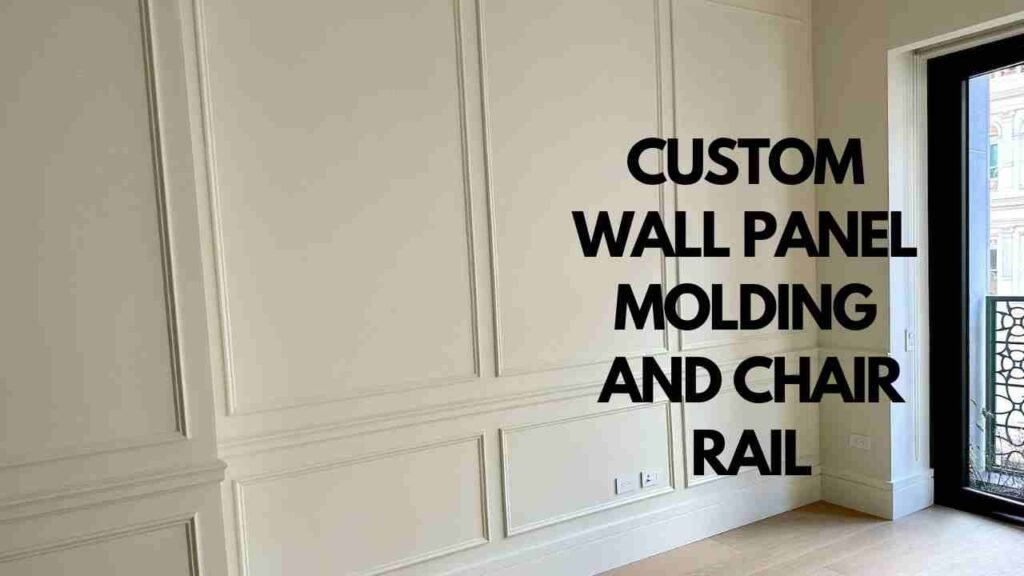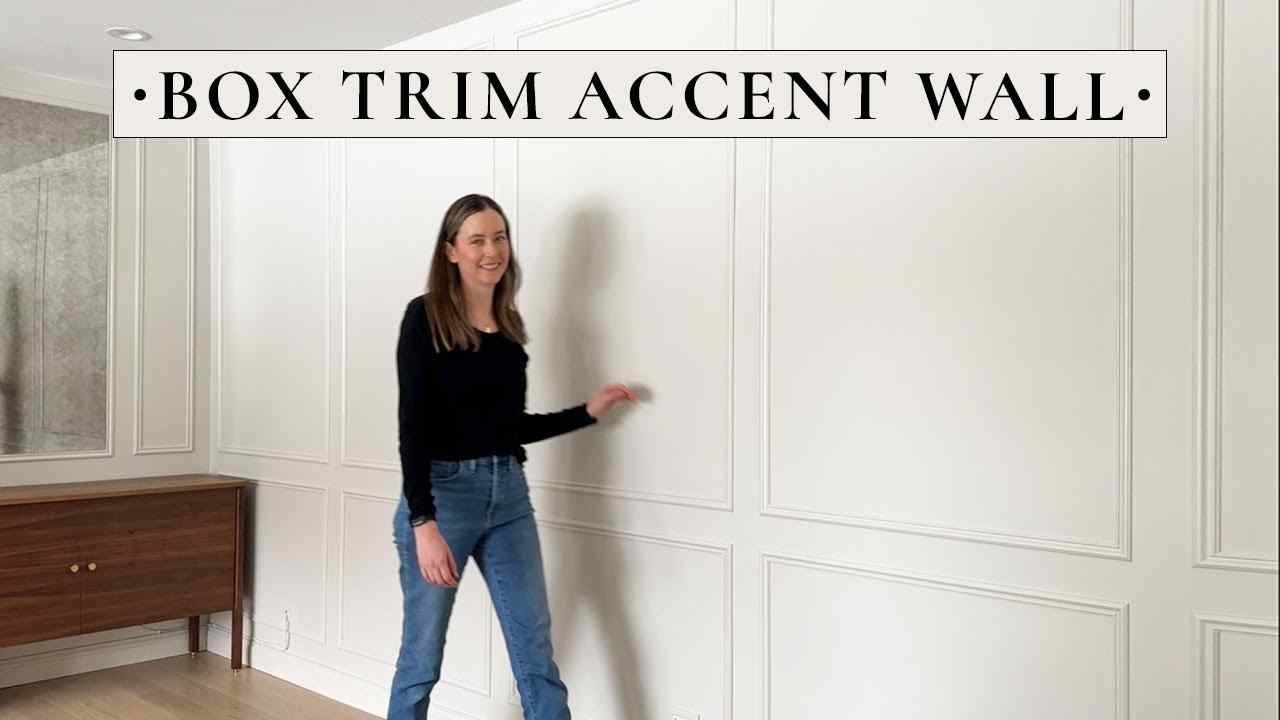When it comes to interior design, it’s often the little details that make the biggest impact—and that’s where custom trim and molding come in. These elegant architectural elements add depth, character, and a touch of sophistication to any space, turning plain walls and ceilings into eye-catching features. Whether it’s crown molding that frames a room beautifully, wainscoting that adds texture, or baseboards that create a polished look, custom trim has the power to elevate your home’s style effortlessly. In this guide, we will explore the various types of trim and molding, their unique benefits, and how they can transform your interiors with charm and elegance along side the help of ET Handyman Services. So, if you’re looking to upgrade your space, let’s dive into the details!

Beyond aesthetics, it also enhances resale value, making it a smart investment. So, if you’re looking to transform your interiors with charm and elegance, custom trim and molding might just be the design upgrade you need. Let’s explore how they work their magic! From classic to contemporary styles, these details can be tailored to suit any décor. Plus, when paired with professional drywall repair services, they ensure a flawless finish, seamlessly blending old and new elements for a polished look. With a variety of materials and finishes available, you can create a design that perfectly complements your home’s personality.
The Role of Trim and Molding in Interior Design
Custom trim and molding play a crucial role in enhancing the aesthetics of any space. These architectural details frame walls, ceilings, and doors, adding elegance and depth to otherwise plain surfaces. Beyond aesthetics, they also define a room’s character, creating a seamless transition between different design elements. Whether it’s a traditional, modern, or eclectic style, the right trim can bring harmony and sophistication to your interiors. Additionally, trim and molding provide practical benefits by concealing imperfections, such as uneven walls or gaps between flooring and walls. When paired with drywall repair services, they ensure a flawless, polished look.
Types of Custom Trim: Exploring Your Options
There are various types of custom trim, each serving a unique function and enhancing different parts of a room. Crown molding is one of the most popular choices, adding a refined touch to ceilings. Baseboards provide a clean transition between walls and floors, while door and window casings frame openings beautifully. Wainscoting and paneling create texture and dimension, often used in dining rooms or hallways for added elegance. Chair rails protect walls while also serving as a decorative element. Picture rails and decorative moldings add further artistic detail, especially in classic or vintage-style homes.
Crown Molding: Adding Elegance to Ceilings
Crown molding is a timeless feature that brings elegance and architectural charm to any room. Installed at the junction of walls and ceilings, it softens transitions and adds visual interest. Available in various styles, from simple designs to intricate patterns, crown molding can complement both classic and contemporary interiors. Beyond its decorative appeal, it also helps hide imperfections in drywall and ceiling joints, creating a flawless finish. Homeowners can choose from different materials, including wood, MDF, and polyurethane, depending on budget and design preferences. Whether painted to match the ceiling or highlighted in a contrasting color, crown molding enhances a room’s sophistication.
Baseboards and Casings: The Foundation of a Polished Look
Baseboards and casings serve as the foundation of a room’s overall look by providing a neat and polished finish. Baseboards run along the bottom of walls, bridging the gap between the wall and floor while adding a decorative touch. Casings, on the other hand, frame doors and windows, enhancing their appearance while covering gaps and seams. Available in various styles and materials, these elements contribute to the home’s design continuity. Whether you opt for simple, sleek trims or ornate, detailed ones, they help define the space’s character.
Wainscoting and Paneling: Texture and Depth for Walls
Wainscoting and paneling add texture, depth, and a sense of luxury to any room. Traditionally used in dining rooms and hallways, they protect walls from damage while offering a refined aesthetic. Wainscoting styles include beadboard, raised panel, and board-and-batten, each contributing to different design themes. Paneling extends beyond wainscoting, often covering full walls for a dramatic effect. Materials range from solid wood to MDF and PVC, providing options for various budgets and styles. These decorative features enhance a home’s architectural character, making spaces feel more structured and cohesive. When combined with drywall repair services, wainscoting and paneling seamlessly integrate into existing interiors, ensuring a flawless and sophisticated look that enhances the overall ambiance of the home.
Custom Trim Styles: From Classic to Contemporary
Custom trim comes in various styles, allowing homeowners to choose options that best suit their interior aesthetic. Classic styles, such as ornate crown molding and detailed wainscoting, add a traditional, timeless feel to spaces. Transitional trim blends classic and modern elements, offering clean lines with subtle detailing for a balanced look. Contemporary styles, on the other hand, emphasize minimalism, featuring sleek, straight-edged trims that create a sophisticated yet understated appeal. The choice of trim style can significantly impact a room’s atmosphere, making it appear more formal, relaxed, or modern.

Material Choices for Trim and Molding
Trim and molding are available in a variety of materials, each offering different benefits in terms of durability, cost, and aesthetic appeal. Solid wood is a premium option known for its natural beauty and strength, making it ideal for high-end projects. MDF (Medium-Density Fiberboard) is a more affordable alternative that provides a smooth surface for painting. Polyurethane and PVC trims are moisture-resistant, making them great choices for bathrooms and kitchens. Plaster molding, often found in historic homes, allows for intricate designs and a highly refined appearance. Choosing the right material depends on budget, intended use, and environmental conditions. When properly installed and maintained, high-quality trim materials can transform interiors, adding sophistication and long-lasting appeal.
The Impact of Trim on Home Value and Aesthetic Appeal
Custom trim and molding do more than enhance aesthetics—they also increase a home’s value. Well-designed trim work creates a polished, high-end look that appeals to potential buyers, making the property more desirable. Features like crown molding, wainscoting, and elegant baseboards can give a home a custom-built feel, setting it apart from standard designs. Additionally, trim work helps frame architectural details, adding character and charm to living spaces. When complemented by drywall repair services, trim creates a seamless, professional finish, further elevating the home’s interior appeal. Whether renovating for personal enjoyment or resale value, investing in custom trim is a smart choice that enhances both visual appeal and long-term property worth.
Seamless Integration: Pairing Trim with Drywall Repair Services
For a flawless interior finish, custom trim and molding should be paired with professional drywall repair services. Over time, walls develop cracks, dents, or imperfections that can disrupt the appearance of trim work. Addressing these issues before installing trim ensures a smooth, even surface, allowing molding to blend seamlessly. Drywall repair also helps in achieving sharp, clean lines, preventing gaps between trim pieces and walls. Whether dealing with minor touch-ups or major drywall repairs, ensuring a solid foundation is essential for long-lasting results. By integrating drywall repair with trim installation, homeowners can achieve a polished, high-quality interior that looks professionally designed and impeccably maintained.
DIY vs. Professional Installation: What’s Best for Your Home?
While some homeowners may choose to install trim and molding themselves, professional installation often provides superior results. DIY projects can be rewarding but require precise measurements, cutting skills, and attention to detail. Mistakes such as uneven cuts or improper alignment can impact the overall aesthetic. Professionals, on the other hand, have the expertise and tools to ensure flawless execution, from seamless joints to smooth finishes. Additionally, professional drywall repair services help create a perfect base for trim installation. For complex projects or high-end finishes, hiring experts ensures precision and durability. Whether opting for DIY or professional installation, the key is proper planning and execution to achieve a refined, elegant look.
Maintenance and Care Tips for Long-Lasting Beauty
To keep custom trim and molding looking pristine, regular maintenance is essential. Dusting and occasional wiping with a damp cloth help prevent dirt buildup. Painted trims may require periodic touch-ups to maintain a fresh appearance, while stained wood trims benefit from occasional polishing. In high-moisture areas, checking for signs of warping or mold is crucial, especially for wood trims. Proper caulking and sealing prevent gaps and maintain a seamless finish. If damage occurs, addressing minor issues early prevents costly repairs later. When combined with professional drywall repair services, well-maintained trim enhances a home’s overall appeal, ensuring its beauty and elegance last for years to come.
Conclusion
Custom trim and molding are more than just decorative elements—they are essential components that enhance both the beauty and value of a home. From elegant crown molding to practical baseboards and wainscoting, these features add character, depth, and sophistication to any space. When paired with drywall repair services, they create a seamless, polished look that elevates interiors to a professional level. Whether opting for classic, transitional, or modern trim styles, the right choices can transform an ordinary room into a stunning showcase of design. Investing in high-quality trim materials and proper installation ensures long-lasting beauty and durability. By maintaining and caring for trim and molding properly, homeowners can enjoy timeless elegance and an enhanced living environment for years to come.
FAQs
What is the purpose of custom trim and molding in interior design?
Custom trim and molding enhance a room’s aesthetics by adding depth, character, and a polished look. They also help conceal imperfections and create a seamless transition between walls, ceilings, and floors.
2. How does drywall repair complement trim and molding installation?
Drywall repair ensures a smooth, even surface for trim installation, preventing gaps and uneven edges. This creates a flawless, professional finish that enhances the overall appearance of the room.
3. What are the best materials for custom trim and molding?
Popular materials include solid wood for a classic look, MDF for affordability, and polyurethane or PVC for moisture resistance. The choice depends on budget, style, and location in the home.
4. Can I install trim and molding myself, or should I hire a professional?
While DIY installation is possible, professional services ensure precision, seamless joints, and high-quality results. Experts also handle drywall repairs, ensuring a flawless final look.
5. How do I maintain trim and molding for long-lasting beauty?
Regular dusting, occasional repainting or polishing, and sealing gaps help maintain trim over time. Addressing minor damage early prevents costly repairs and keeps interiors looking pristine.






Recent Comments